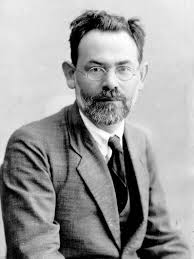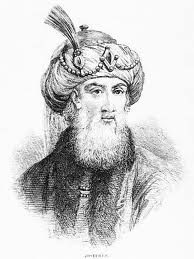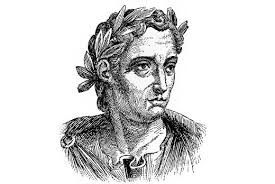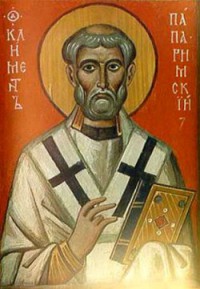What will you do with jesus christ?
1. Jesus Christ is a Man of history – Non-Gospel Records
The most reliable historical witness regarding the life of Jesus Christ is found in the New Testament records. I do not make this assertion lightly and in spite of my Christian bias, I believe that this claim will stand up under the highest degree of scrutiny. No other historical source comes even close to providing the reliable and early narrative on the life of Christ as these documents. I will not devote time to establishing this point here (see the list of resources at the end of this presentation in note #6). I have given my observations in a paper entitled “Are the New Testament Gospel Documents Reliable?” and a great amount of scholar level work has been done by others far more qualified than myself on these matters. However, the non-Biblical sources of information about Jesus Christ that we will examine do provide additional confirming evidence regarding His life and ministry.
It is important to examine the evidence for Jesus Christ with a careful assessment from all of the information available to us.
Non- Christian Historical Sources
In spite of Bertrand Russell’s statement above, there is not a single serious and credentialed historical scholar who would deny the existence of Jesus Christ. The non-New Testament historical references of Jesus Christ are fairly numerous. Here are some of these narratives.
1. Jewish Sources
Babylonian Talmud
“It has been taught: On the eve of Passover they hanged Yeshu (Greek – English rendering – “Jesus”). And an announcer went out in front of him for fourty days (saying): He is going to be stoned because he practiced sorcery and enticed and led Israel astray. Anyone who knows anything in his favor let him come and plead in his behalf. But not having found anything in his favor they hanged him on the eve of Passover” – Sanhedrin 439.
 |
One version of this reads “Yeshu the Nazarene. The name “Yeshu” translated from Greek to English is the name “ Jesus”. Also the term “hanged” can be used to refer to a crucifixion. Even the Apostle Paul in Galatians 3:13 and Luke in his Gospel (Luke 23:39) describes the crucifixion of Christ as “hanged”. The fact that hanging rather than the common Jewish method of being stoned to death was mentioned here adds a degree of substantiation to the crucifixion event as the likely occurrence. These references do not deny the Jewish involvement is the death of Jesus, nor do they deny that Jesus performed miracles or that He gathered a large following of believers.In a number of other passages in the Jewish Talmud it is inferred that Jesus was the illegitimate son of Mary. He is referred to as “Ben Pandera” or “Jeshu Ben Pandera”. The word “ pandera” is a Greek twist of the word “parthenos” which is translated “virgin”. In one passage it states – “His mother was Miriam a women’s hair dresser…. This one strayed from her husband… (she) played the harlot with carpenters…” The stated accusation is that Mary (Miriam) was pregnant by a man not her husband and the child that she gave birth to as a result of this adulterous affair was Jesus. (see note #1)The Jewish scholar Joseph Klausner – “The Jews constantly heard that the Christians (who spoke Greek) called Jesus by the name – Son of the virgin… and so in mockery they called him Ben ha Pandera – son of the leopard”(see note #1). This accusation is also recorded in the Gospel of John 8:41 as the accusation leveled regarding Jesus during His life and ministry.This charge of mockery continued to be utilized on into the later centuries. The first five centuries after Jesus Christ and the Gospel events contain numerous Jewish references to Jesus with various names and story lines that were probably not meant to be conveyed as historical records but rather were used for mockery and humor. Never however was Jesus presented by the Jewish rabbis and scribes as a myth or legend but to the contrary He was always portrayed in historical terms. The man Jesus of Nazareth was described by these Jewish and rabbinical sources as Yeshu or Yeshu of Nazareth, one who performed miracles by the power of sorcery. He led Israel astray. He had an unusual and mysterious birth and ultimately was crucified (hanged) on the eve of the Passover.
 |
First Century Jewish historian -Josephus 38 A.D. ~ 100 A.D.
Josephus twice mentions Jesus in his writings along other New Testament individuals such as Jesus’ brother James, John the Baptist, Herod, Pilate and others. Regarding James the brother of Jesus he states that Ananus – “convened the judges of the Sanhedrin and brought before them a man named James, the brother of Jesus who was called Christ and certain others. He accused them of having transgressed the law and delivered them to be stoned” – Antiquities book 20.9.1.The second reference to Jesus is recorded in Antiquities 18.3.3 and is known as the Testimonium Flavianum. A fourth century Arabic version of this passage reads – “ At this time there was a wise man who is called Jesus. And his conduct was good and (he) was known to be virtuous. And many people from among the Jews and the other nations became his disciples. Pilate condemned him to be crucified and to die. And those who had become his disciples did not abandon his discipleship. They reported that he had appeared to them three days after his crucifixion and that he was alive; accordingly, he was perhaps the Messiah concerning whom the prophets have recounted wonders”. This passage as stated provides numerous details that are included in the New Testament Gospel narratives. – A wise, holy man with many disciples (followers) , condemned by Pilate and crucified, reported by his followers to have risen from the dead and to be (perhaps) the Messiah – the one spoken of by the (Old Testament) prophets.
2. Non-Religious Secular Sources
There are a number of secular writers and historians that mention Jesus Christ. Most of these individuals were antagonistic to the Gospel.
A. Cornelius Tacitus – A.D. 55-120
Cornelius Tacitus is generally regarded as the greatest historian of ancient Roman history. He states regarding the Roman emperor Nero that nothing could “relieve Nero from the infamy of being believed to have ordered the conflagration, the fire of Rome. Hence to suppress the rumor, he falsely charged with the guilt and punished with the most exquisite tortures the persons commonly called Christians, who were hated for their enormity. Christus (common misspelling for Christ) the founder of the name was put to death by Pontus Pilate, the procurator of Judea in the region of Tiberius: but the pernicious superstition, repressed for a time, broke out again not only through Judea where the mischief originated but through the city of Rome also” – Annals XV 44.
B. Suetonius – A.D. 120
“As the Jews were making constant disturbances at the instigation of Chrestus (Christ), he (Claudius) expelled them from Rome” – Seutonius, Life of Claudius 25.4This record corresponds to the reference of Acts 18:2 which relates that a “certain Jew named Aquila a native of Pontus, having come from Italy with his wife Priscilla, because Claudius had commanded all the Jews to leave Rome”. The expulsion of the Jews mentioned in Acts is supported by this reference approximately 70 years later. The witnessing of Christians to Jews in Rome created an atmosphere of such unrest and hostility among the Jewish population that the Roman emperor Claudius expelled the Jews from Rome in order to restore peace.
 |
C. Pliny the Younger (Plinius Secundus) – A.D. 112
Pliny the younger wrote extensively regarding Christians and their faith in Christ. He stated “they (Christians) affirmed however that the whole of their guilt or error was that they were in the habit of meeting on a fixed day before it was light, when they sang in alternate verses a hymn to Christ as to a god….”
D. Julius Africanus
A Christian writer Julius Africanus wrote in A.D. 221 of two earlier recorded possible references to Christ’s crucifixion that were written in the late first or early second century. These records have been lost but are referred to and preserved for us by Africanus. He states that these narratives mention a mid day darkness that took place at or near the same period of time as the darkness accompanying the crucifixion of Christ as recorded in the Gospel account. – Luke 23:44,45 , Mark 15:33,34 , Matthew 27:45,46.
Thallus
“Thallus, in his third book of his histories explains away this darkness as an eclipse of the sun – unreasonably as it seems to me ….” – Julius Africanus – Chronography 18.1.
Phelgon
“During the time of Tiberius Caesar an eclipse of the sun occurred during the full moon….” – Julius Africanus, Chronography 18.1 These references do not mention Jesus Christ directly but they do provide some insight into the historical record that was in existence in the late first century regarding the strange occurrence of a mid day darkness.
E. Lucian of Samosata – A.D. 170
“The Christians, you know, worship a man to this day – the distinguished personage who introduced their novel rites and was crucified on that account… You see these misguided creatures start with the general conviction that they are immortal for all time, which explains the contempt of death and voluntary self-devotion which are so common among them; and then it was impressed on them by their original lawgiver that they are all brothers from the moment that they are converted and deny the gods of Greece and worship the crucified sage and live after his laws. All this they take quite on faith, with the result that they despise all worldly goods alike, regarding them merely as common property” . Lucian- The Death of Peregrine 11-13. There are other references to Christians and Christ by Lucian of Samosata and other writers such as Mara Bar Serapion – A.D. 70 and Hadrian – A.D. 117-138.
Christian Historical Sources:
The early Christian fathers (late first and early second century) provide a link back to the disciples of Christ most specifically the disciple (apostle) John. Their writings are based on second hand information and come from Christians (early Christian Church leaders and fathers) who heard and were instructed from the actual disciples of Christ (first hand eye-witnesses to the life and work of Jesus Christ).
A. Papias – A.D. 60-130
According to reliable church history, Papias was a student of the apostle John. (see note #2.) He wrote books that are no longer in existence, however some of the content of these books are preserved by Eusebius the fourth century church historian. His narratives provide a link to the eye-witnesses (apostle John and other early disciples) for early documentation on the person of Jesus Christ. He stated “On any occasion when a person came (in contact with me) who had been a follower of the Elders, I would inquire about the discourses of the elders – what was said by Andrew or by Peter or by Philip or by Thomas or James or by John or Matthew or any other of the Lord’s disciples and what Aristion and the Elder John, the disciples of the Lord, say. For I did not think that I could get so much profit from the contents of books as from the utterances of a living and abiding voice”. – Eusebius, The History of the Church – 3.39Papias clearly affirms that he sought out testimony from first and second hand sources on the life and work of Jesus Christ and that he considered this information superior to other written records. Eusebius also records from Papias the following: “And the elder said this also: Mark having become the interpreter of Peter wrote down accurately everything that he remembered, without however recording in order what was either said or done by Christ….” – 3:39. Here Papias affirms the Gospel of Mark as being the account provided to Mark by the apostle Peter who was an eyewitness of the life of Jesus Christ.
B. Polycarp – A.D. 69-155
Polycarp, was like Papias a student of the apostle John. He died as a Christian martyr and during his life provided leadership for the church in Smyrna. In his letter to the Church at Philippi (A.D. 110) he stated –“Let us therefore without ceasing hold fast by our hope and by the earnest of our righteousness which is Jesus Christ who took up our sins in His own body upon the tree, who did no sin… For He gave this example to us in His own person and we believed this”. – (see note #3)
C. Ignatius – A.D. 1st century – 117
Ignatius, who according to church tradition, was a student of Peter, Paul and John, wrote seven letters and provides extensive information on the early church and was a second-hand witness to the person and life of Jesus Christ (see note #5).Regarding Jesus Christ and His death and resurrection he stated – “ But be fully persuaded concerning the birth and the passion (crucifixion events) and the resurrection which took place in the time of the governorship of Pontius Pilate… For I know and believe that He (Jesus Christ) was in the flesh even after the resurrection and when He came to Peter and his company…” – Ignatius, Magnesians 1
 |
D. Clement of Rome – A.D. 1st century – 102
Church history affirms that Clement of Rome was a disciple of the apostles – (see note #4). He may have been the Clement mentioned by Paul in Philippians 4:3. He stated in his letter to the Church at Corinth – “The apostles received the gospel for us from the Lord Jesus Christ…. Having therefore received a charge and having been fully assured through the resurrection of our Lord Jesus Christ…” Clement, Corinthians p-42.These four early Christian church fathers provide a direct link to the apostles and early eye-witnesses of the life of Jesus Christ. There are also other first and early second century Christian writers who give us second hand information on the person of Jesus Christ. Quadratus (1st century) , Irenaeus (A.D. 110-190+), Justin Martyr (A.D.100-166) along with the first century writings – The Didache (A.D 95-97) and The Epistle of Barnabas (A.D. 70-130) provide witness to the birth, life, death and resurrection of Jesus Christ.Any argument that Jesus Christ is an invention of late second, third or fourth century Christianity does not stand up to the extensive evidence of these early second-hand witness resources. Many of these leaders died as martyrs for the witness that they provided. They affirmed that the witness-based information that they provided was true. People may die for something false that they believe is true but people do not die for something they know to be false. These men died affirming that their witness was true.
CONCLUSION
What can we conclude from these historical resources? The Jewish and secular accounts that we looked at here were without doubt antagonistic to the Christian movement and to Christ Himself for various political and religious reasons. But what can we understand from these narratives? First, the existence of Jesus Christ of Nazareth is without question – affirmed.Second, His birth and the events surrounding it are challenged by the Jewish rabbinical writings mentioned above. Why this response to the birth and lineage Jesus Christ? Could it be that it was a reaction to the Christian message and proclamation that Jesus was virgin –born? Or could it be that this response was derived from the earliest Jewish views regarding His origination? There is of course no way to know for sure why this area of Jesus’ life was questioned, however, it seems to me to not be simply a coincidence that this response to Jesus by the second through fourth century rabbinical writings corresponds with the same response to Him by His Jewish contemporaries as is recorded in the Gospel accounts (Mark 6:1-3). The Gospel affirms in the clearest of terms that Jesus’ birth was not the result of immoral decisions between two people but instead His birth was miraculous in nature.Third, the fact of the miraculous nature of Jesus Christ’s ministry is affirmed by the rabbinical narratives. The constant theme of these records is that the source of Jesus’ (Yeshu’s) ability to work wonders was that he “practiced sorcery” and that he”beguiled and led Israel astray”. Again we see that Jesus’ miracles are not denied but rather the source of the miraculous power and ability to perform them are held to question and skepticism.Fourth, the Jewish historian Josephus twice mentions Jesus and confirms His crucifixion and the reporting by His disciples of His resurrection from the dead.Fifth, the 1st and 2nd century secular historians and historical sources refer to Jesus’ death by crucifixion under Pilate and the fact that His followers worshipped Him as one “would worship a god (or God)”.Sixth, the 1st and 2nd century Christian leaders provide a direct link back to the disciples and apostles (the eyewitnesses of Jesus Christ’s life and ministry).They affirm that the witness and proclamation of these first hand sources confirm Jesus’ life, ministry, miracles, death on the cross for our sins culminating with His resurrection from the grave.
